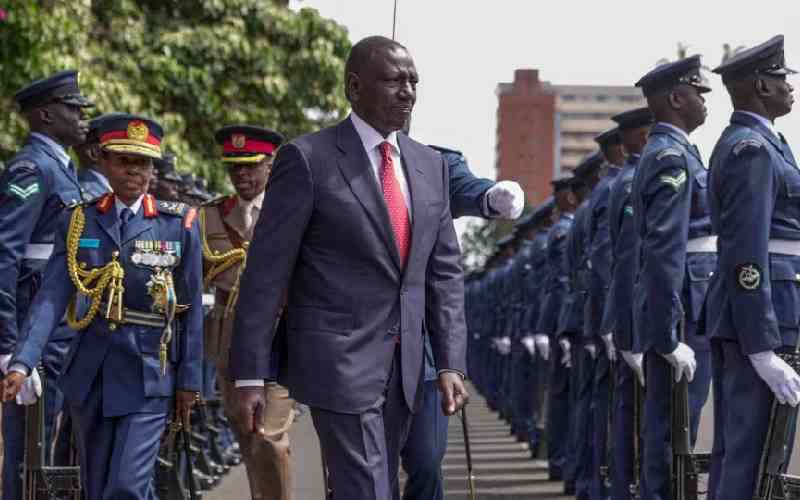
Mombasa, aside from its beaches, is endowed with a high number of tuktuks, which are not as common in Nairobi. What’s driving the difference?
Tuktuks aren’t new in Kenya. I saw the first one in Nairobi almost three decades ago. It was used to distribute a tasty bread brand called Aurora.
Today, tuktuks – I’m not sure if this is a brand name or derived from the noise the engine makes – are an established means of transport, particularly in the coastal city. The name could have Indian origins.
Their attraction in Mombasa could be a result of their manoeuvrability along the narrow streets. They can get where a car can’t. There’s also a weather angle – it’s hot and humid and walking is difficult. A tuktuk easily takes you from one point to another cheaply. They’re also cheap to fuel.
Tuktuks are popular in tropical weather nations, from Cambodia to India and El Salvador. In Nairobi, the weather allows you to walk long distances comfortably. Not so in Mombasa and other hot places .
Mombasa is unique in that lots of people live and work within the town. That probably gives Mombasa residents a different perception of distance. Nairobians are used to long commutes. A Nairobian might not pay for the short distances Mombasa residents pay for.
The tuktuk’s absence in Nairobi might have to do with pride. I don’t think one would feel very happy being dropped outside a meeting spot by a tuktuk on Valentine’s Day. To a Nairobian, a tuktuk is a sign of being unsophisticated. That perhaps explains why Uber did so well in Nairobi. Uber took care of different social-economic classes, with hustlers taking Boda and Chapchap, while others take UberX and Select.
Breaking monotony
In Mombasa, curiously, these choices aren’t all available once you open the Uber platform. There’s only UberX and Poa, which I suspect is the tuktuk.
Does a tuktuk signify the social-economic divide between the two cities? Mombasa is a smaller and less wealthier city. Are the numerous new high-rise buildings changing the fortunes of Mombasa? They are breaking the monotony of low-rise buildings newly painted blue and white, like the University of Nairobi or Barclays Bank.
To be fair, tuktuks are popular in other towns outside Nairobi. They’re popular with hustlers out to outshine sufferers.
Curiously, there seem to be more tuktuks than motorcycles in Mombasa compared to Nairobi.
Since motorbikes are ‘lower’ than tuktuks, could we conclude that Nairobi has more hustlers than Mombasa? Or that since motorbikes are faster than tuktuks, they reflect Nairobians’ higher value for time?
Regulations are also a factor, with Nairobi authorities trying to get motorbike owners out of the CBD. I also suspect that Nairobians perceive tuktuks as unsafe. You could easily be pulled out of one by thugs.
Stay informed. Subscribe to our newsletter
The good news is that tuktuks, no matter how we perceive them, provide commuters with choices. Time-conscious commuters can take tuktuks or boda bodas. The rest have matatus and buses. The affluent are also accepting the convenience of boda bodas and buying their own motorbikes.
In a country where public transport is in private hands, such choices play a role in self-regulation.
Interestingly, what makes economic sense to an individual might not make sense on a large scale. Sixty motorbike passengers could easily fill a bus. But mass public transport, through buses, trains, and for Mombasa, ferries and boats, is not well developed. Tuktuks and boda bodas are filling that void.
Finally, let’s admit that despite our dreams, like the Bus Rapid Transport system, our current road network is more suited to tuktuks and boda bodas. No wonder they’re doing so well. Even Uber has noticed that.
Please don’t look down on boda bodas or tuktuks; they represent the reality of our transport system. The dreams can wait.
 The Standard Group Plc is a
multi-media organization with investments in media platforms spanning newspaper
print operations, television, radio broadcasting, digital and online services. The
Standard Group is recognized as a leading multi-media house in Kenya with a key
influence in matters of national and international interest.
The Standard Group Plc is a
multi-media organization with investments in media platforms spanning newspaper
print operations, television, radio broadcasting, digital and online services. The
Standard Group is recognized as a leading multi-media house in Kenya with a key
influence in matters of national and international interest.
 The Standard Group Plc is a
multi-media organization with investments in media platforms spanning newspaper
print operations, television, radio broadcasting, digital and online services. The
Standard Group is recognized as a leading multi-media house in Kenya with a key
influence in matters of national and international interest.
The Standard Group Plc is a
multi-media organization with investments in media platforms spanning newspaper
print operations, television, radio broadcasting, digital and online services. The
Standard Group is recognized as a leading multi-media house in Kenya with a key
influence in matters of national and international interest.






